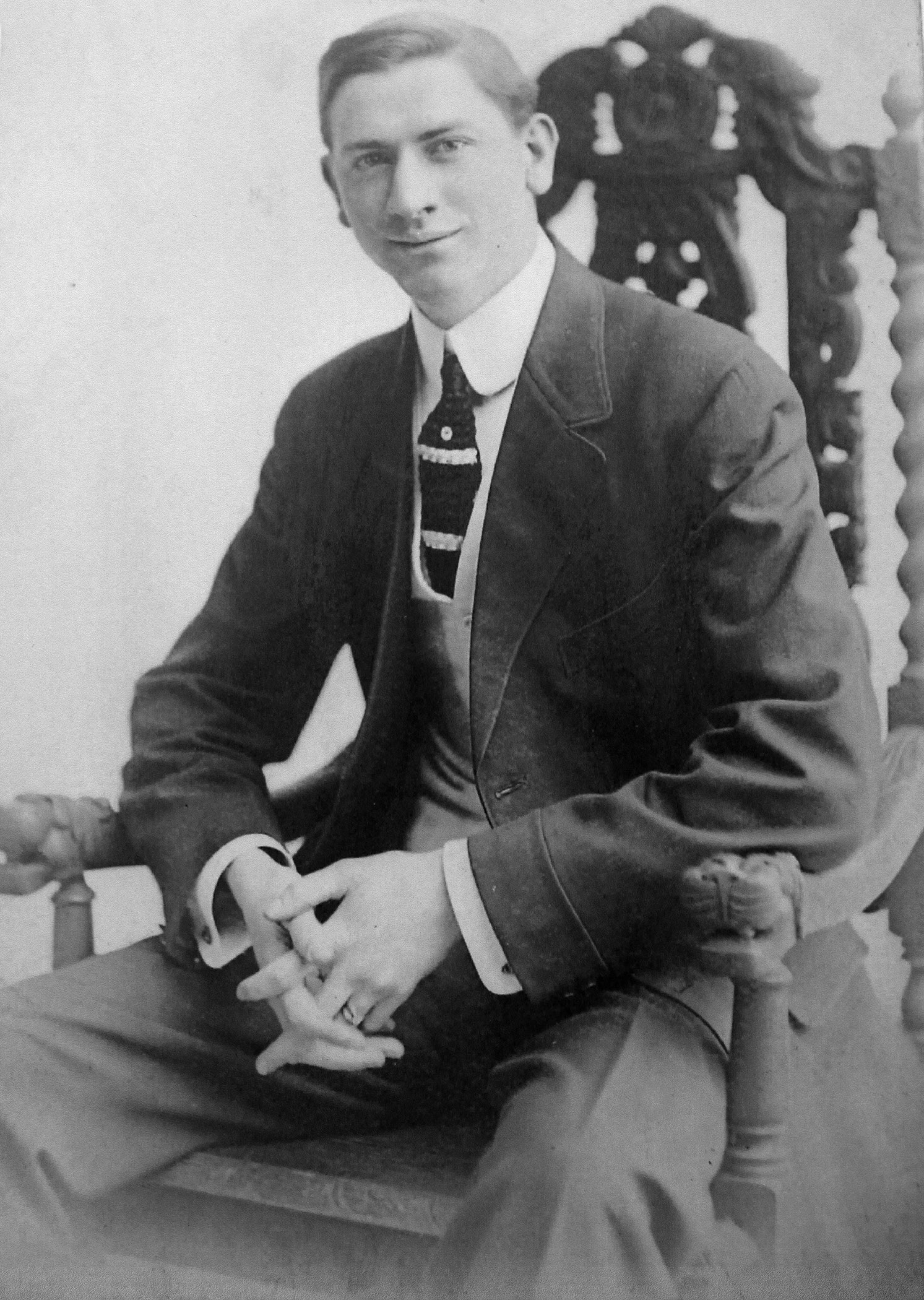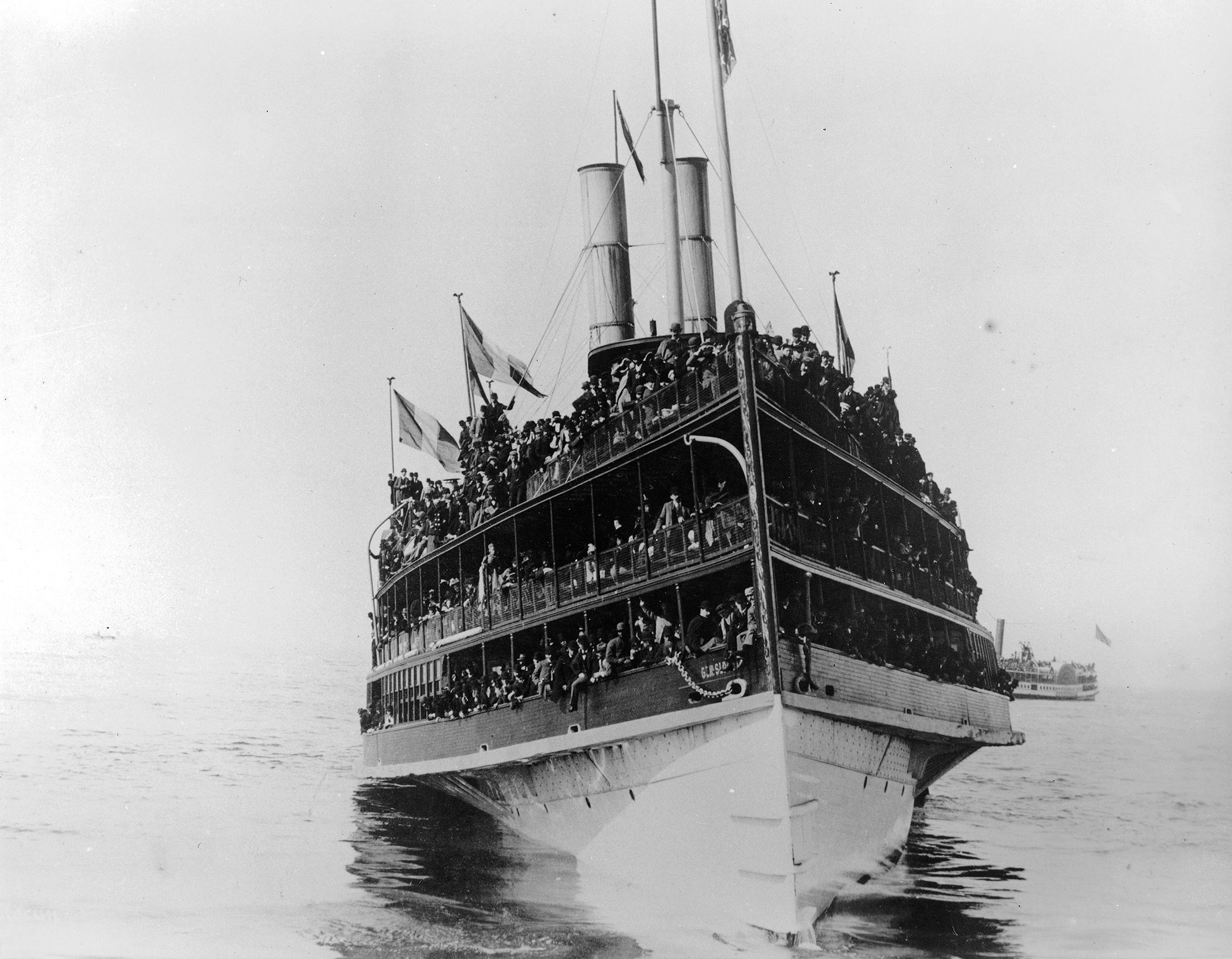We receive quite a number of amazing donations here at The Mariners’ Museum, but every now and then we receive something this has such an amazing and touching story that we can’t help but be affected. One such recent donation is an one cent token from the Knickerbocker Steamship Company, donated by Robert Zipse. This token, and others like it, were used to purchase goods while on one of the Knickerbocker Company vessels. What makes this particular token (pictured below) so special is the sentimentality and meaning attached to it by the man whose life was forever changed by a day that was supposed to be filled with joy and fun.


On June 15, 1904, St. Mark’s Evangelical Lutheran Church chartered the Knickerbocker Steamboat General Slocum for their annual excursion and picnic to Locust Grove. St. Mark’s was located in area of Manhattan known as Little Germany as there was a large population of German immigrants in the neighborhood, including many who had only recently arrived. As this excursion was on a weekday, it was mostly attended by women and children. This included William F. Zipse (pictured below in 1906) who at the time was 15 years old, his mother Sophie Zipse (pictured below on the day of her wedding) and William’s five siblings, Sophia (17), Mary (13), Louise (10), Helen (3) and Albert (1).


General Slocum left the pier at 9:40 a.m., with the energy and excitement of the 1358 passengers high. Rain clouds that had threatened the excursion earlier in the morning had passed and a fast tide was helping the ship to make good time through the water. It was only twenty minutes later, as Slocum was approaching the treacherous area of water known as Hell Gate that a problem was first noticed. A fire had broken out in the forward cabin, which was being used as a lamp room. Faulty equipment and lack of effort to help the passengers led to a chaotic and disastrous scene aboard the boat. Nearby boats came to the aid of the passengers, without which the death toll would have been much higher.


It only took about 20 minutes from the time the fire began to creep through the boat to when the boat was beached on North Brother Island, but the pain and suffering of those involved would last much longer. In total (according to the 1904 report by the US Government), 955 people had died, including William Zipse’s five siblings, Sophia, Mary, Louise, Helen and Albert. William managed to survive because he fell onto one of the tugboats that came to help, most likely jostled off the boat by fellow passengers. The fall broke his leg, but he was safe. William’s mother, Sophie, managed to survive by holding onto driftwood and was found the following day on the East River near the Battery.


While there were many that could have been blamed for the incident, only Captain William Van Schaick was convicted of a crime. The inspector who had passed the ship for that season, Henry Lundberg, was fired by President Roosevelt, but was not convicted of any crime. Van Schaick was found guilty of criminal negligence and was sentenced to 10 years in Sing Sing prison. He served only about three years of his sentenced as he was pardoned by President Taft, most likely due to his age (he was over 70 at this point). While Van Schaick, as the Captain of General Slocum, was no doubt partially responsible for the diasaster, the fact that no one else was convicted of any crimes, including the Knickerbocker Steamboat Company, means that justice was never fully served.
What was supposed to be a pleasure cruise had turned into a nightmare that would change the face of Little Germany in Manhattan. The funerals went on for over a week, with those remaining trying to pick up the pieces of their shattered lives. Many moved away from Little Germany to try and escape the painful memories and start over. In many cases, the disaster wiped out entire families. As for the Zipse family, William’s father, Frederick, was so devastated by the loss of his children the he was unable to continue working and died in 1917 from cancer. Sophie lived until 1940, when she was buried with her husband and the five children who perished in the disaster. As for William, he was an ambitious man and therefore was able to pick up the pieces and carve out a fine life for himself and his family, but he never forgot. When the disaster was over, William still had two of the Knickerbocker tokens. These he carried around in his pocket everyday for the rest of his life to remember and honor the family he had lost. It is because of William’s amazing story and the importance of this disaster that we are so excited to have this token come to our collection, so thank you to Robert Zipse for thinking of us a fitting home for your family treasure.